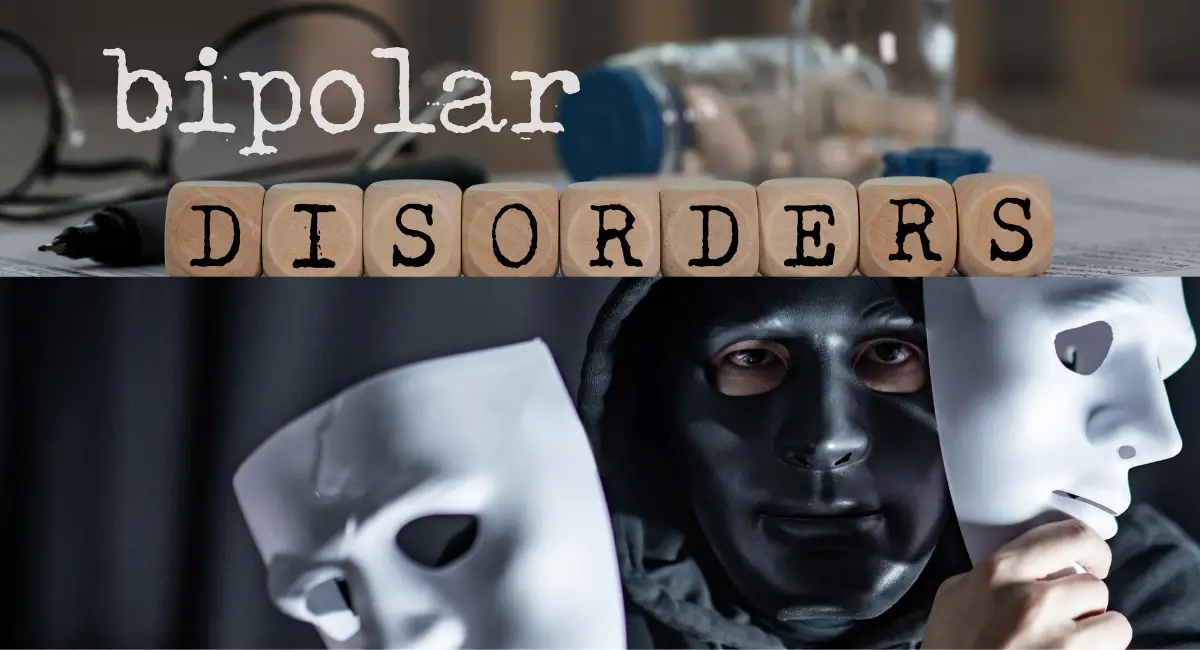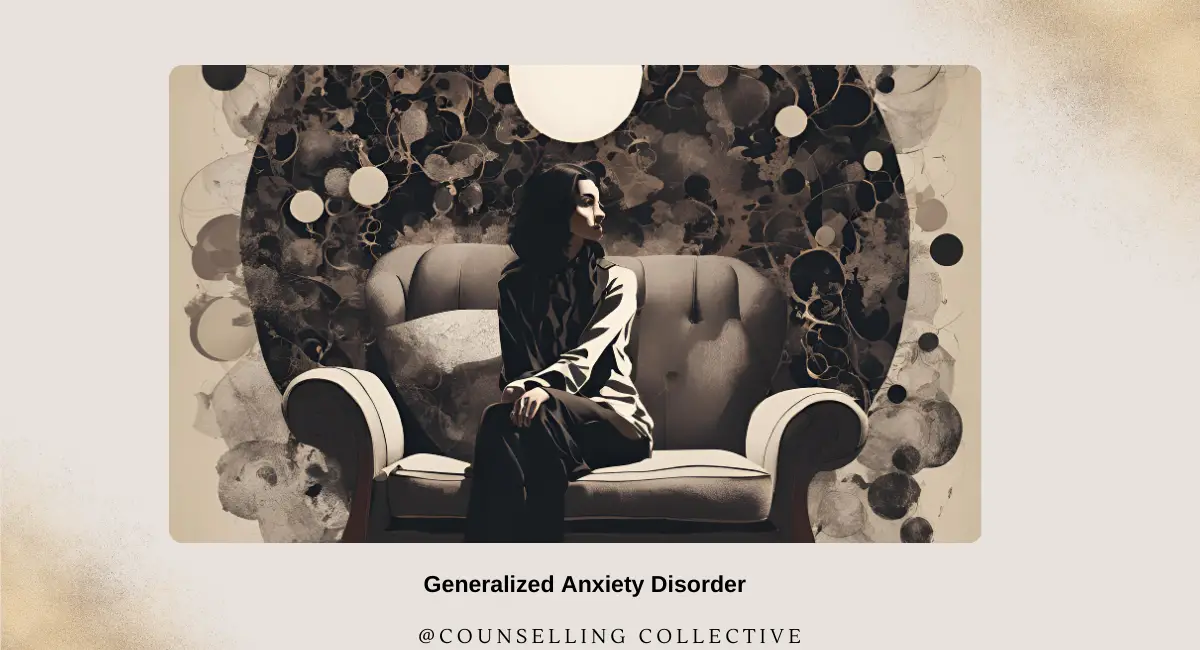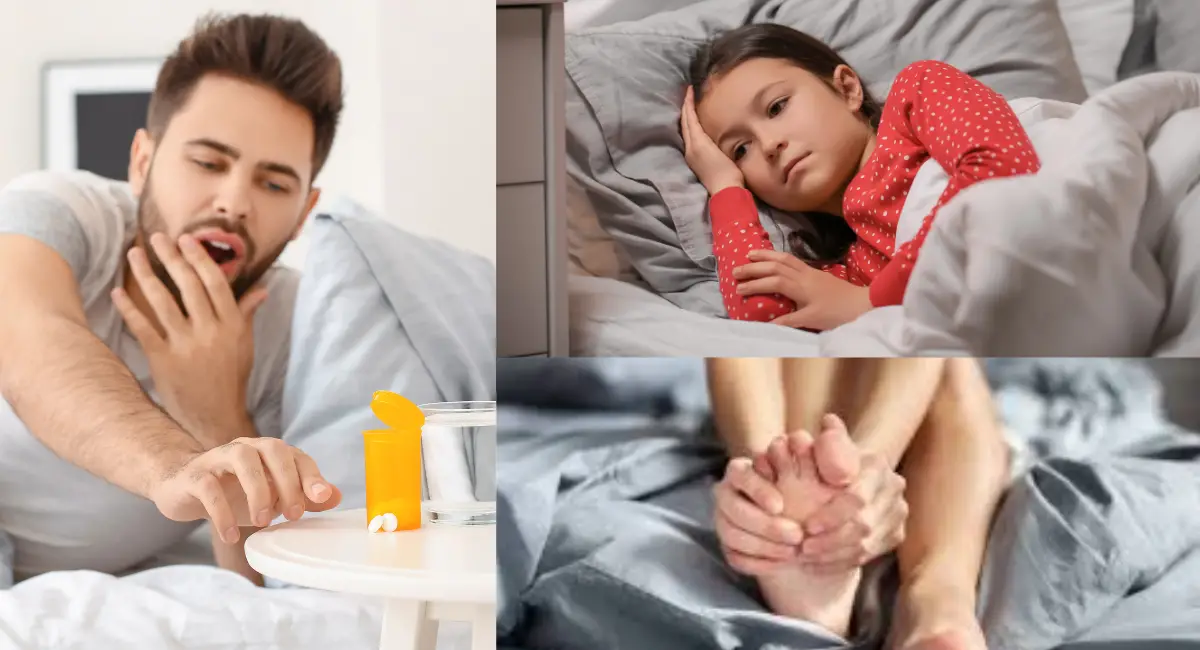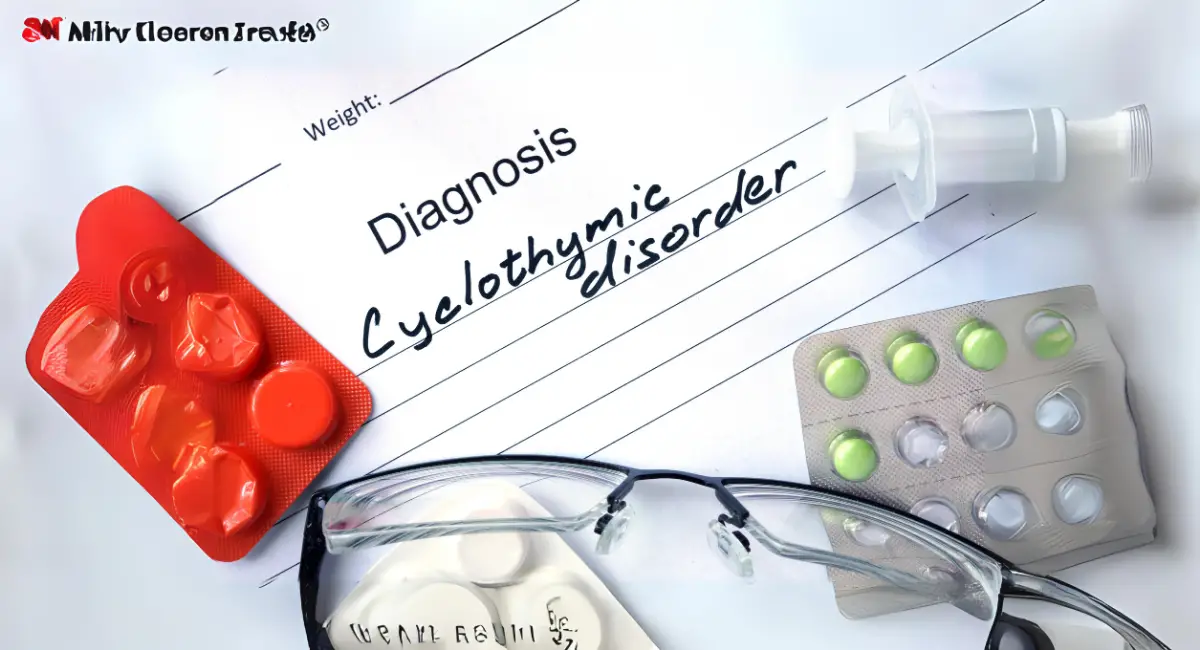
Bipolar II Disorder Symptoms: Causes, and Therapy Options
Contents
Introduction
Bipolar II Disorder is a subtype of bipolar disorder characterized by cycles of mood disturbances that include episodes of hypomania and major depression. Unlike Bipolar I Disorder, which involves full-blown manic episodes, individuals with Bipolar II experience less intense mood elevations known as hypomanic episodes. These hypomanic episodes are often followed or preceded by major depressive episodes that can be severe and debilitating.
According to the Diagnostic and Statistical Manual of Mental Disorders, Fifth Edition (DSM-5), Bipolar II Disorder is distinguished by the absence of manic episodes and the presence of at least one hypomanic episode and one major depressive episode. While hypomania may not impair functioning to the same degree as mania, the depressive episodes can be severe and disabling, often requiring intervention. This article will explore Hypomanic Episodes and Depressive Episodes in Bipolar II Disorder, alongside causes and treatment options.
Types of Bipolar II Disorder
Bipolar II Disorder is defined by two types of mood episodes: Hypomanic Episodes and Depressive Episodes. Understanding these episodes and how they affect individuals is key to managing the disorder.
1. Hypomanic Episodes
Hypomania is a milder form of mania, marked by periods of elevated mood, increased activity or energy, and often heightened productivity or creativity. Unlike manic episodes, hypomanic episodes do not cause significant impairment in daily functioning or require hospitalization. However, hypomania can lead to risky behaviors and can be disruptive in certain aspects of life, especially when paired with subsequent depressive episodes.
- The DSM-5 defines a hypomanic episode as a distinct period of elevated, expansive, or irritable mood lasting at least four consecutive days. During this period, individuals exhibit increased energy or activity, which is noticeably different from their usual behavior.
- Symptoms of hypomania include inflated self-esteem, decreased need for sleep, talkativeness, racing thoughts, distractibility, increased goal-directed activity, and engaging in pleasurable activities that may have harmful consequences (e.g., overspending, risky sexual behaviors).
Emily, a 30-year-old software engineer, experiences a hypomanic episode that leads to her working non-stop on a new project for days with little sleep. She feels unusually confident, talks rapidly, and starts several ambitious ventures simultaneously. Although she’s highly productive, her behavior becomes impulsive, and she makes decisions that strain her relationships, like quitting her job without a clear backup plan.
2. Depressive Episodes
Depressive episodes in Bipolar II Disorder are similar to those seen in Major Depressive Disorder, with individuals experiencing prolonged periods of sadness, hopelessness, and fatigue. These depressive episodes often last for weeks or months, significantly impairing a person’s ability to function at work, in relationships, and in everyday life.
- A major depressive episode is defined by the DSM-5 as a period of at least two weeks during which five or more symptoms of depression are present. These include a depressed mood, loss of interest or pleasure in most activities, significant weight change, insomnia or hypersomnia, fatigue, feelings of worthlessness or guilt, difficulty concentrating, and recurrent thoughts of death or suicide.
- Depressive episodes are often more debilitating than hypomanic episodes, causing substantial distress and impairment in daily functioning.
John, a 42-year-old teacher, experiences a major depressive episode after a hypomanic phase. He feels overwhelming sadness, lacks energy to even get out of bed, and finds no enjoyment in his favorite hobbies. John’s concentration at work deteriorates, and he begins to withdraw from his friends and family. Despite wanting to improve, he feels stuck in his depressive thoughts and struggles to find hope.
Common Symptoms of Bipolar II Disorder
Bipolar II Disorder presents with different symptoms during hypomanic and depressive phases. Below is a table outlining the common symptoms for each phase, with examples of how they may manifest:
| Symptom | Description/Example |
|---|---|
| Elevated Mood (Hypomania) | A heightened sense of well-being or irritability. For example, someone may feel unusually happy or irritable for several days, even without a clear cause. |
| Increased Activity (Hypomania) | Engaging in numerous activities with high energy. For example, a person might start multiple new projects at work or home without finishing them. |
| Decreased Need for Sleep (Hypomania) | Sleeping less but still feeling energetic. For example, a person might sleep only a few hours per night but still feel rested and productive. |
| Impulsivity (Hypomania) | Engaging in risky or unplanned behaviors. For example, someone may spend large amounts of money impulsively or make hasty decisions. |
| Depressed Mood (Depression) | Persistent sadness or hopelessness. For example, someone may feel down or empty for weeks, struggling to feel joy in anything. |
| Fatigue (Depression) | Chronic tiredness or exhaustion, even after adequate rest. For example, someone may feel too tired to perform daily activities like cooking or working. |
| Loss of Interest (Depression) | A lack of interest in activities once enjoyed. For example, someone might stop socializing or participating in hobbies like sports or art. |
| Suicidal Thoughts (Depression) | Recurrent thoughts of death or suicide. For example, someone may contemplate self-harm or believe that life is no longer worth living. |
Causes and Risk Factors of Bipolar II Disorder
The development of Bipolar II Disorder is influenced by a combination of genetic, biological, and environmental factors. These factors contribute to the onset of both hypomanic and depressive episodes.
1. Genetic Factors
Bipolar II Disorder often runs in families, indicating a strong genetic component. Individuals with a family history of mood disorders, including bipolar disorder and depression, are at a higher risk of developing Bipolar II.
- Studies suggest that genetic factors play a significant role in the development of bipolar disorders. First-degree relatives of individuals with Bipolar II Disorder are more likely to develop the disorder themselves.
- Genetic variations that affect neurotransmitter regulation and brain circuitry may predispose individuals to mood dysregulation and emotional instability.
2. Neurobiological Factors
Imbalances in neurotransmitters such as serotonin, dopamine, and norepinephrine contribute to the mood fluctuations seen in Bipolar II Disorder. These neurotransmitters play critical roles in regulating mood, sleep, and cognition, and their dysregulation can trigger both hypomanic and depressive episodes.
- Brain imaging studies have shown differences in the activity and structure of areas in the brain that regulate mood, such as the prefrontal cortex and limbic system. These abnormalities are associated with mood dysregulation and impulsivity in individuals with Bipolar II Disorder.
- The reward system in the brain may also be overly sensitive during hypomanic episodes, leading to heightened goal-seeking behavior and reduced inhibition.
3. Environmental and Psychological Factors
Stressful life events, trauma, and substance use can trigger episodes in vulnerable individuals. Major life changes, such as losing a job, ending a relationship, or experiencing trauma, can act as triggers for both hypomanic and depressive episodes.
- Environmental stressors, including chronic stress, emotional trauma, or substance abuse, can worsen the frequency and intensity of mood episodes in individuals predisposed to Bipolar II Disorder.
- Emotional and psychological factors, such as difficulty managing stress, poor coping mechanisms, or high levels of anxiety, can contribute to the onset of episodes.
Therapy and Treatment Options for Bipolar II Disorder
Managing Bipolar II Disorder typically requires a combination of therapies to stabilize mood, prevent episodes, and improve overall functioning. Below are key treatment options:
1. Cognitive Behavioral Therapy (CBT)
CBT is an effective therapy for Bipolar II Disorder, particularly for managing depressive symptoms and preventing relapse. It helps individuals recognize and challenge distorted thought patterns that contribute to their mood swings and develop healthier coping strategies for managing both hypomanic and depressive episodes.
Example: Emily, who often experiences hypomanic episodes followed by depression, works with her CBT therapist to identify early signs of her mood shifts. She learns to manage impulsive behaviors during hypomanic phases and develop healthier thought patterns during depressive episodes, helping her gain better control over her mood swings.
2. Interpersonal and Social Rhythm Therapy (IPSRT)
IPSRT is specifically designed to help individuals with bipolar disorder regulate their daily routines, including sleep, eating, and social activities. By maintaining regular rhythms, IPSRT helps reduce the likelihood of mood swings and prevent episodes of hypomania and depression.
Example: John, who struggles with frequent depressive episodes, learns through IPSRT how to create a structured daily routine that includes consistent sleep patterns and regular social interactions. By stabilizing his daily life, John is better able to manage his depressive episodes and avoid potential triggers for hypomanic episodes.
3. Dialectical Behavior Therapy (DBT)
DBT is particularly useful for individuals with Bipolar II Disorder who have difficulty regulating emotions during hypomanic episodes. DBT focuses on developing skills in emotional regulation, mindfulness, and distress tolerance to help individuals manage intense emotional states without acting impulsively.
Example: Mark, who tends to make impulsive decisions during hypomanic episodes, works with his DBT therapist to develop strategies for emotional regulation. By practicing mindfulness and distress tolerance techniques, Mark is able to recognize when he is becoming overly stimulated and take steps to prevent impulsive actions.
4. Pharmacotherapy (Medication Management)
Medication is often a cornerstone of treatment for Bipolar II Disorder. Mood stabilizers such as lithium, anticonvulsants, and antipsychotics are commonly prescribed to prevent mood swings. Antidepressants may be used cautiously to treat depressive episodes, but they must be monitored carefully to avoid triggering hypomania.
Example: Emily is prescribed a mood stabilizer to help regulate her mood and prevent both hypomanic and depressive episodes. Her psychiatrist also monitors her closely to ensure that her medication is effectively preventing episodes without causing side effects or triggering hypomania.
Long-Term Management of Bipolar II Disorder
Bipolar II Disorder is a lifelong condition that requires ongoing management. Here are key strategies for maintaining stability and preventing relapse:
- Medication Adherence: Consistently taking prescribed medications is crucial for preventing mood episodes and stabilizing mood.
- Regular Therapy: Ongoing participation in therapy, such as CBT or DBT, helps individuals develop effective coping strategies and manage triggers for mood episodes.
- Routine and Structure: Maintaining a consistent daily routine, including regular sleep, meals, and activities, helps reduce the likelihood of mood swings.
- Support Networks: Staying connected with family, friends, and support groups provides valuable emotional support and helps individuals stay accountable to their treatment plans.
- Monitoring for Relapse: Recognizing early warning signs of hypomanic or depressive episodes allows for timely intervention and helps prevent full-blown episodes.
Conclusion
Bipolar II Disorder is a complex mood disorder characterized by alternating hypomanic and depressive episodes that can significantly impact an individual’s life. While hypomanic episodes may not cause severe impairment, depressive episodes can be deeply disabling. However, with the right combination of treatments—such as Cognitive Behavioral Therapy, Interpersonal and Social Rhythm Therapy, and Dialectical Behavior Therapy—along with medication management, individuals with Bipolar II Disorder can stabilize their mood and improve their quality of life. Long-term management, including consistent routines and ongoing therapy, is essential for preventing relapse and maintaining emotional well-being.
References
- American Psychiatric Association. (2013). Diagnostic and Statistical Manual of Mental Disorders (5th ed.). Washington, DC: American Psychiatric Publishing. Link
- Miklowitz, D. J. (2011). The Bipolar Disorder Survival Guide: What You and Your Family Need to Know. Guilford Press.
- Nolen-Hoeksema, S. (2014). Abnormal Psychology. McGraw-Hill Education.
- Geddes, J. R., & Miklowitz, D. J. (2013). Bipolar Disorder: A Practical Guide to Diagnosis and Treatment. Oxford University Press.
- Craske, M. G., & Barlow, D. H. (2007). Mastery of Your Anxiety and Depression: Workbook (Treatments That Work). Oxford University Press.
Explore Other Mental Health Issues







